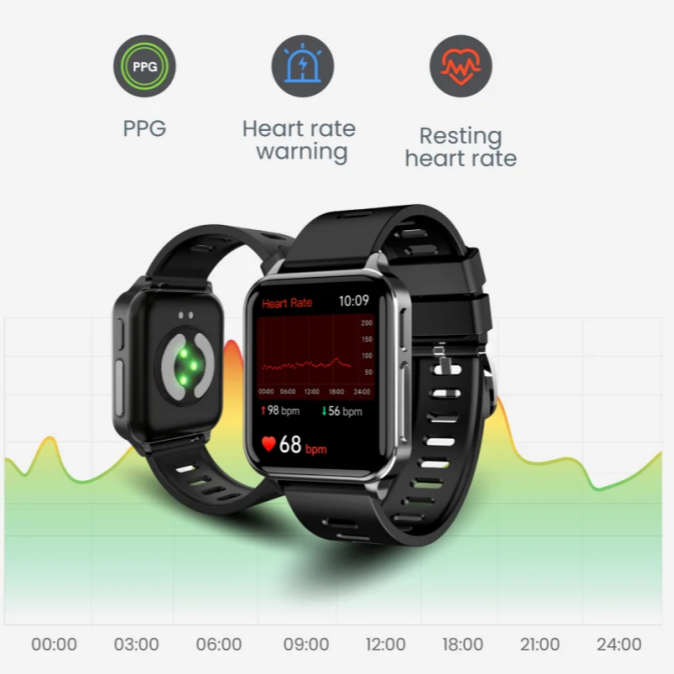Smart wearable technology use has become increasingly prevalent over the past decade. For example, smartwatches are frequently being used to measure and monitor people’s heart rate. A person who has been using a smartwatch to monitor their heart rate can give that data to their doctor, who can potentially use it to make diagnoses. But are smartwatches really accurate for heart rate? In this blog, I will explain the principle of monitoring heart rate in smartwatches, thus aiding in better understanding the issue of smartwatch heart rate accuracy.
How does a smartwatch monitor your heart rate?
Smartwatch usually uses a optical heart sensor to measure your heart rate, which is also called photoplethysmography (PPG) technology. It typically works by shining light onto the skin and using photodiodes to detect the amount of blood flowing through your wrist. Blood is red because it reflects red light and absorbs green light. When your heart beats, the blood flow in your wrist will reflect red light and which can be absorbed by the flashing green light on smart watches. Then smart algorithm uses changes in light reflection caused by blood flow through the the wrist to calculate the heart rate. In this manner, it is usually possible to accurately monitor heart rate.

Are chest straps more accurate than smartwatch heart rate monitors?
Before smartwatches, only way to monitor heart rate was a chest strap. The chest straps are widely recognized as the best heart rate monitor device, with 99.6% accuracy when worn correctly. Unlike the smartwatch, a chest strap heart monitor uses electrocardiography to record the electrical activity of your heart. It is done by two diodes located on the chest strap, which picks up the electric signal and then sends an electromagnetic signal containing heart rate data. The chest strap is very accurate because it directly measures the electrical activity of the heart, while optical heart sensor used by smartwatches measures the secondary occurrence – flowing blood.
How is the smart watch heart rate accuracy?
In fact, chest strap heart rate monitor is really more accurate than smart watch heart monitor. However, since they require a moisture-water pad to pick up an electric signal, which makes it more challenging to use than smartwatch. From a scientific point of view, the PPG technology used in smartwatches can also accurately detect heart rate in principle. Since the optics takes measurements from a wrist, it is may affected by vibrations, shocks, so it cannot be relied on in some conditions. But if you tighten the sensor well on your wrist, it can be said that it should be as accurate as a chest strap.
Can smart watch detect irregular heart beat?
One of the most common irregular rhythms detected by personal devices is atrial fibrillation (AFib). And whether performed in a doctor's office or via a portable device worn at home, we've used electrocardiogram (ECG) to help detect AFib. Many smartwatches have a built-in ECG sensor, which uses LEDs flashed against your skin to detect blood flow and measure your heart rate. Sensors collect this information and algorithms process it to make sense of your heart's rhythm. Your smartwatch takes these measurements day and night, if an irregular rhythm is detected, it sends you an alert.
Conclusion
With the further development and maturation of PPG technology, the monitoring of heart rate by smartwatches will become increasingly accurate. Compared to traditional heart rate monitoring devices, smartwatches are more convenient to use, allowing for on-the-go monitoring anytime, anywhere. They can also provide urgent notifications for irregular heart rates, which represents a significant advancement in health monitoring. Fitaos has been dedicated to heart rate sensing technology for decades, committed to offering cost-effective ECG smartwatches that accurately monitor heart rates, along with various best smartwatch for health monitoring, to accompany and safeguard your well-being.

